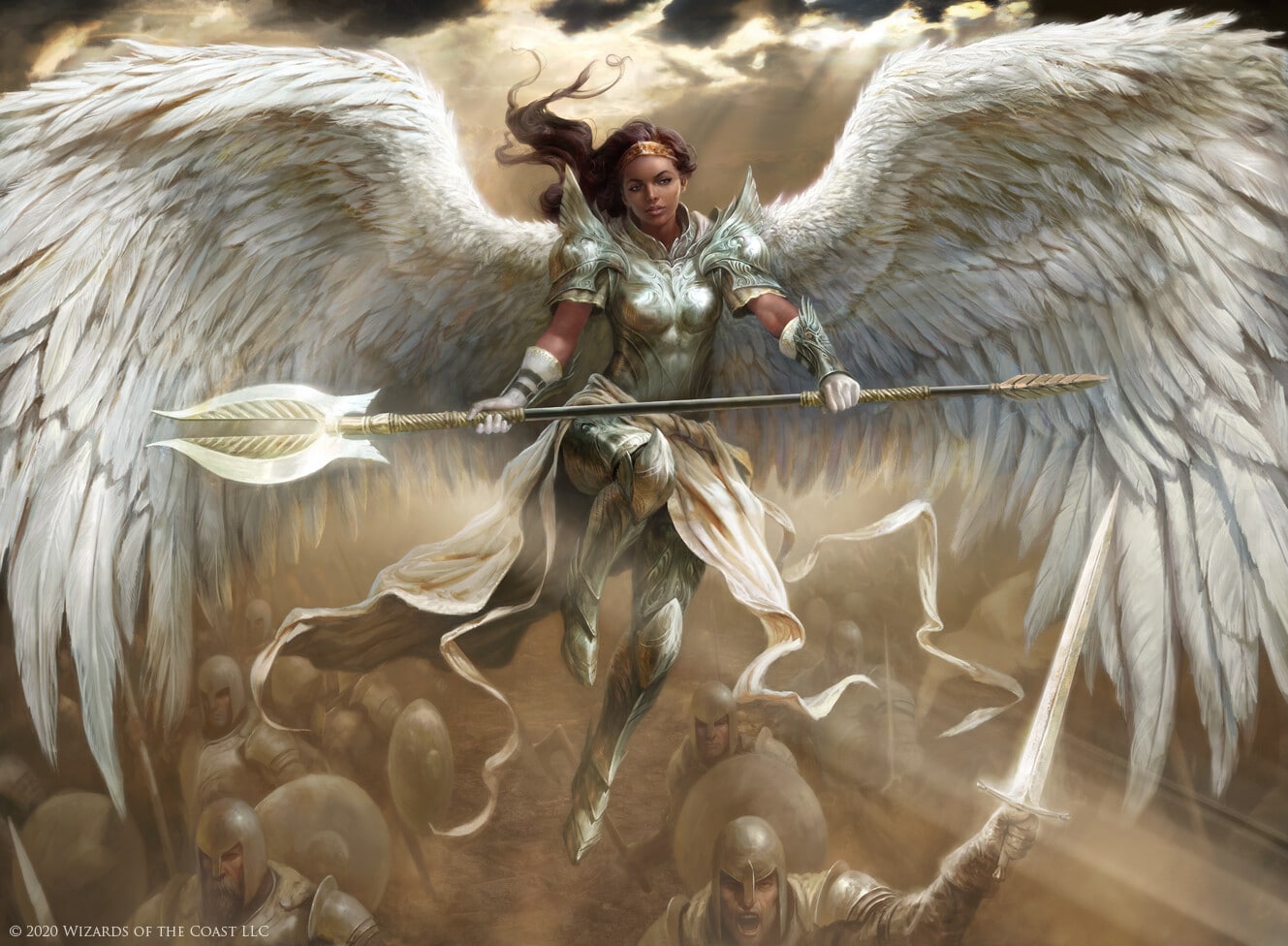Glaive 5e Guide
Published on December 23, 2022, Last modified on December 8th, 2023
When you’re looking to split some heads, there are few options better than the heavy, two-handed glaive.

Antonio José Manzanedo - Wizards of the Coast - Anointer of Valor
What is a Glaive?
A glaive is a long reach weapon that consists of a blade at the end of a polearm. The blade is typically curved, making it perfect for broad slashing sweeps. The handle is usually between five and six feet in length, which allows you to keep enemies away from you while still being able to deliver punishing blows. Due to it’s length and unwieldy size, it is considered a Heavy weapon in D&D 5e.
Glaive Property Breakdowns
Weapon type: Glaives are martial weapons, meaning they’re restricted to builds with proficiency in martial weapons. This is usually fine, as glaive’s require a solid investment into martial abilities, like Strength and the Polearm Master feat to be optimized.
Damage: A d10 damage dice is on the better end of the spectrum when it comes to mundane weapons. There are a few weapons that output more damage, namely the greatsword at 2d6 and greataxe at 1d12. This is offset by the fact that the glaive has the reach property, allowing you to attack enemies within 10ft, rather than just 5ft.
Damage type: Damage types aren’t particularly important, but it can determine which of the Tasha’s Cauldron of Everything damage type feats you can use. Because they deal slashing damage, you’re glaive build opens up the Slasher feat, which is unfortunately the worst of the damage type feats.
Properties: The glaive has a bunch of fun properties:
- Heavy: There’s a give and take to the heavy property. The give is being able to be used with arguable the best martial feat, Great Weapon Master. The take is Small creatures have distadvantage on attacks with them, which restricts the glaive to Medium creatures and above.
- Reach: Adding 5 ft to the reach of your attacks is way stronger than it initially sounds. The biggest advantage is it opens up the combo of Polearm Master and Sentinel, which allow glaive wielders to completely control a battlefield.
- Two-Handed: When wielding a glaive, you won’t be able to benefit from a shield as you need both hands to swing the weapon. This also rings true for using somatic and spellcasting components without War Caster or some other method of skipping these spellcasting prerequisites.
Best Uses for a Glaive in 5e
As they don’t have the raw damage output of greatswords or the balance of a sword/shield combo, glaives require a bit of setup to be truly optimized. That said, with the proper build behind them, they are one of the best weapons in 5e.
As a baseline, glaives really only work for STR-based martial characters that are Medium sized or above. Most glaive users choose this particular weapon as they can use it with the powerful Polearm Master feat. This allows you to attack creatures as they enter your 10ft reach and also nets a bonus action with the opposite end of the weapon that deals 1d4 bludgeoning damage.
Glaive users with the Polearm Master feat synergize extremely well with Sentinel, which reduces your target’s speed to 0 when you hit them with an opportunity attack. Because of the glaive’s 10ft reach and Polearm Master’s ability to opportunity attack creatures as they enter your reach, this means you can stymie an enemy’s movement before they get within range to attack you.
Seeing as glaives have the heavy property, they can also be used with the Great Weapon Master feat, which can pump your damage output with +10 to your attack’s damage and extra attacks after crits or downing an enemy.
Seeing as there are so many fun feats to use with glaives, they are best suited for fighters who get more ASIs than any other class. Variant humans are also a great start for aspiring glaive wielders, as you can start your adventuring campaign with any of the aforementioned feats. Regardless, any build that has spec’d into STR and has a couple ASIs to devote to feats will find glaives a fun weapon to use that opens up interesting choices in combat.
Closing Words
In conclusion, the glaive is an excellent weapon choice for heavy martial characters due to its long reach and versatility in combat situations. It’s ideal for characters want to control the battlefield. Additionally, its wide arc makes it great for crowd control or keeping enemies away from you while still dealing out big damage with each slash of its curved blade. With all these uses in mind, consider adding this powerful weapon to your character’s arsenal!
